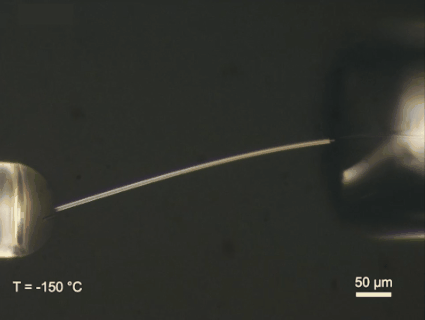On December 20, Science and Technology Daily, a newspaper co-founded by the Chinese Ministry of Science and Technology, the State Commission of Science, Technology and Industry for National Defense, the Chinese Academy of Sciences and China Association for Science and Technology, unveiled China’s Top 10 Scientific and Technological Breakthroughs 2021. The research on elastic ice microfibers, completed by Prof. TONG Limin and his team at the College of Optical Science and Engineering, Zhejiang University, was selected into the list.
On July 9, the Science magazine published a paper describing how Tong et al. grew their single-crystal ice microfibers (IMFs) at -50 Celsius degrees. These microfibers are not only elastic and bendable but also able to transport light with low losses.

As a functional structure that confines and transports light with high flexibility, optical fibers are currently one of the most effective tools for manipulating light field. Silicon oxide, the primary component of conventional glass optical fibers, is one of the most abundant substances in the Earth’s crust. However, ice or liquid water is more prevalent than silicon oxide on the Earth and in many extraterrestrial bodies. Therefore, the making of optical fibers from ice has a wide range of applications.

Elastic bending process of a single-crystal ice microfiber
imaged under an optical microscope
In this study, Tong and his colleagues from Zhejiang University, together with a collaborator from the University of California, Berkeley, built a growth device and improved the experimental conditions for electric field-enhanced ice crystal growth. They successfully grew IMFs with diameters ranging from 10 micrometers to less than 800 nanometers at -50 Celsius degrees. Moreover, they reversibly bent the IMFs up to a maximum strain of 10.9% at -150 Celsius degrees, which approaches the theoretical elastic limit.
“Our finding will expand the boundary of knowledge about ice and inspire research into ice-based optical fibers for optical transmission, optical sensing, and ice physics, as well as the development of ice-based technology on micro- and nanometer scales, which may be desired for extreme environments,” said Tong.
(From: ZJU NEWSROOM)

